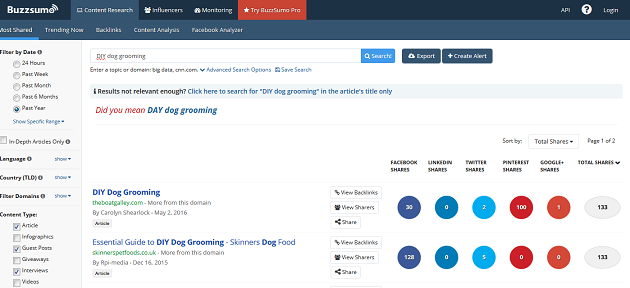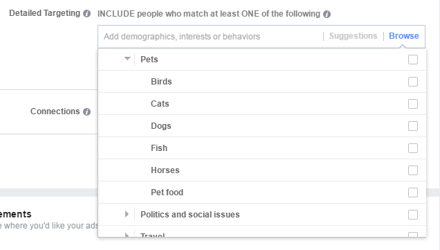Content Your Social Followers Really Want to See

While still a digital mystery to most brands, social media has quickly become a valuable channel for those that can leverage its innate power.
What makes social so interesting is that audiences self-select somewhat, defining their interests, aligning themselves with both their wants and needs. If marketers can identify the optimal audience, develop in-demand content and craft messaging that compels prospects to convert into leads, social media can provide immense value.
Discover how to create content that your social followers really want to see with the five tactics highlighted below:
1. See What's Already Popular
The best way to find out what type of content will resonate with your audience is by looking at what is popular - or trending - with your company's niche audience.
One way to do this is by keeping an eye on competitors' content strategies or by searching for industry-related terms or hashtags on social networks like Twitter and Instagram. For instance, a pet supply retailer could search "#DogProblems" on Twitter and find that some people using this hashtag are interested in learning more about grooming for the summer. With this insight, the retailer could create a "Summer Guide to Dog Grooming" article that would resonate with this audience.
Aside from searching for what's trending on social networks, businesses can use a tool like Buzzsumo to analyze the best performing content for any topic or competitor. For example, if that same retailer searches "DIY dog grooming" on Buzzsumo, the tool will show the top related content for that phrase. With this data, the retailer can shape his or her content strategy to align with the 'Net's best performing content for that specific topic.

2. Take a Look at Your Own Insights
Even if your brand's overall content strategy isn't performing as well as you want it to, you can still gain some insight from your own analytics. Which blogs or email newsletters have performed the best in the past? By taking inventory of your best and worst performing content, you can shape future strategies because you know what type of topics resonate with your audience as well as which ones are missing the mark. What's more, looking at Facebook Insights>Posts can show you what content is getting the most clicks, comments, reactions or shares. While you are there, be sure to visit the "Overview" section to get a look at your Page's demographics to understand who your largest audience is (e.g., females between 25 and 34) and determine content strategy based on that information.
3. Review Customer Feedback
Outside of engagement analytics, your customers likely already give you some pretty big hints about the type of content they want - but it is up to you to listen to what they say. By sifting through customer inquiries, complaints and feedback, business owners can get an idea of the type of content that would best resonate with their audience.
For example, if the pet supply retailer notices a lot of support tickets inquiring about the safety of elk antlers for dogs, it is a safe bet that an article that provides insight on the topic would be a hit with the retailer's audience. It is important, however, to also think about the bigger picture. Instead of just writing an article about elk antlers and safety, the retailer could create an infographic highlighting the safest toys for dogs, or even a list of unsafe dog toys. By looking at the bigger picture, the retailer can easily create three or more related, yet different, pieces of content that are all relevant to his or her audience.
4. Target with Hashtags
Even if you are creating content that is relevant to your audience, it will not perform well if it is not seen by the right people. Fortunately social networks make it easy for businesses to target audiences organically with hashtags. That said, in order to be successful with hashtags, businesses must use the feature on the right words or phrases.
For starters, local businesses are wise to use location-based hashtags for a better chance to reach nearby consumers. Additionally, it is important to use hashtags on words or phrases that are more likely to reach your niche, rather than broader terms. If the pet supply retailer publishes a post on Twitter with the caption "Discover five natural ways to keep your dog safe from ticks this summer," it is a better idea to hashtag the word "tick" or add a hashtag like "tickprotection" to the end of the caption, rather than hashtag a broader term like "summer." This is because the word "summer" is likely to turn up a lot more results, and will probably get lost in the shuffle instead of seen by the right audience.
It is important to note that there are some hashtag generator tools on the market, including All-Hashtag and Hashtag Generator. Keep in mind, however, that often times these tools generate less than optimal hashtags, so business owners should also use their own judgement when leveraging these tools.
5. Share Content Based on Interests
If you want to take targeting to the next level, the only way is to share content with social audiences based on their interests. The easiest way to do this, of course, is by promoting posts and using each social network's advertising tools to target audiences based on attributes like interests (see image).

If you want to take an organic approach to targeting based on interests, however, you can also share content in niche-specific groups. Facebook, for instance, has groups for just about every topic. That said, it is important to know group rules before posting, as some admins won't allow members to promote business-related content. To remedy this problem, business owners could create their own industry-related group. The pet supply retailer, for example, could create a "New Puppy Parent" group. That said, it is important to note that the group would have to be created with the retailer's personal page, as Facebook doesn't enable business pages to start groups.
Quality is King
When all is said and done, the most important thing for business owners to keep in mind when coming up with a content strategy is that quality reigns supreme. After all, if a piece of content provides value and is well-written, it is much more likely to get shared on social and have the potential to go viral.

Subscribe to Our Newsletter!
Latest in Social Media










